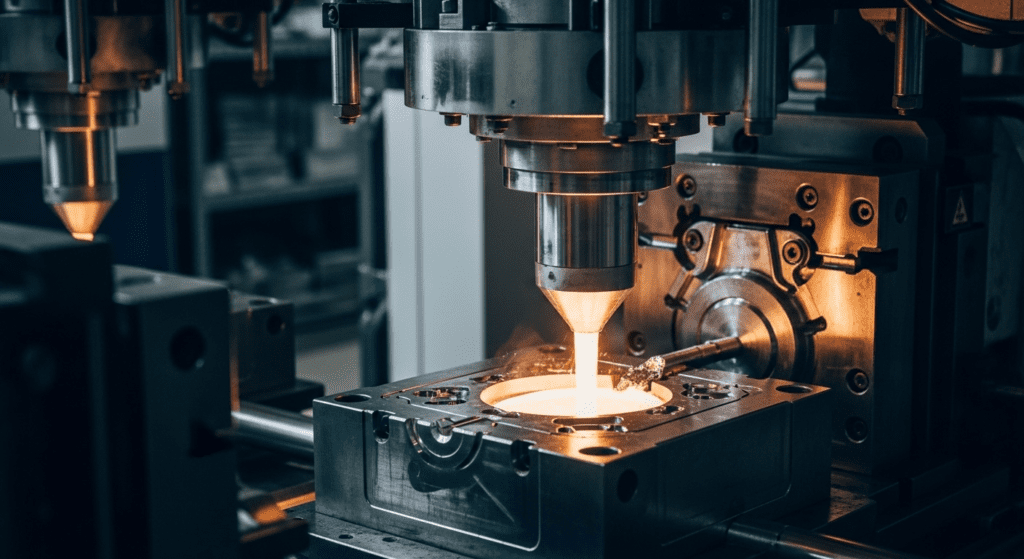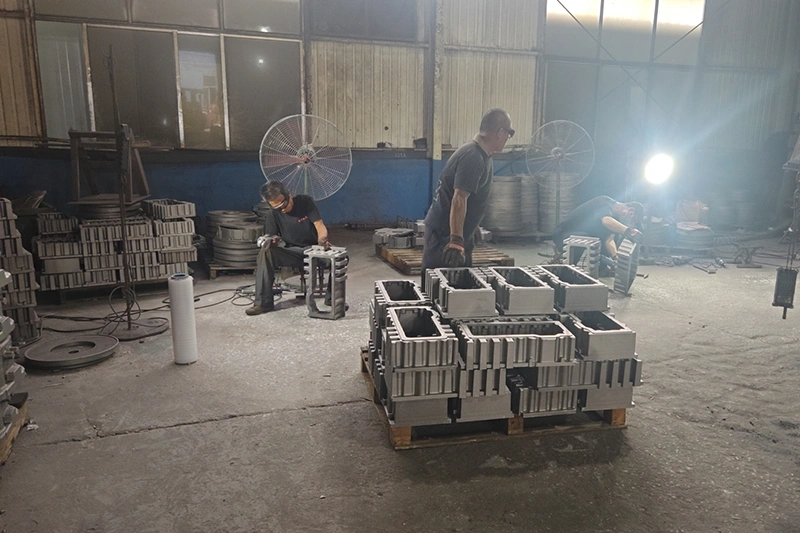Cold chamber die casting is a metal casting process that produces precise, complex parts by injecting molten metal into reusable steel molds under high pressure. The key difference between hot chamber and cold chamber die casting lies in how the metal is melted and delivered—cold chamber systems keep the melting furnace separate from the injection mechanism. This separation allows manufacturers to work with metals that have higher melting points, like aluminum, copper, and magnesium alloys.
The process excels at creating parts with excellent surface finishes and tight tolerances. Industries from automotive to aerospace rely on cold chamber die casting for components that need both strength and precision.

Cold chamber die casting stands apart from other casting methods through its unique approach to handling molten metal. The system uses an external furnace to melt the metal, then transfers measured amounts into the injection chamber for each casting cycle.
This method works particularly well for alloys that would damage the injection system if kept in constant contact with molten metal. The separation protects equipment while enabling the use of materials with melting points above 1,200°F.
The technology produces parts ranging from small electronic housings to large automotive engine blocks. Each part emerges with consistent quality and minimal need for secondary machining.
The process begins with preparing the die halves. Operators spray a release agent onto the die surfaces to prevent sticking and aid part removal.
The die halves then close and lock under tremendous force—often thousands of tons. This clamping pressure must exceed the injection pressure to prevent metal from escaping at the parting line.
An automated ladle or manual operator transfers molten metal from the holding furnace to the shot chamber. The amount must be precise—too little leaves the cavity unfilled, while too much wastes material and energy.
The metal temperature at this point typically ranges from 50-100°F above its melting point. This superheat ensures complete cavity filling before solidification begins.
A hydraulic plunger drives forward, forcing the molten metal through the shot chamber and into the die cavity. Injection pressures can reach 10,000-25,000 PSI.
The metal fills the cavity in milliseconds. This rapid filling minimizes temperature loss and ensures fine details reproduce accurately.
The metal begins cooling immediately upon entering the die. Water channels within the die blocks regulate temperature and speed solidification.
Cooling time depends on part thickness and complexity. Thicker sections require longer cooling to prevent internal defects.
Once solidified, the die halves separate. Ejector pins push the casting from the die cavity.
The part may still be warm but must be solid enough to maintain its shape during ejection. Premature ejection can cause warping or damage.
The casting emerges with excess material called flash at the parting line and gates. Trim dies or cutting tools remove this excess.
Additional finishing operations may include shot blasting, machining, or surface treatments. Many parts require minimal finishing due to the process’s inherent accuracy.
The fundamental difference between hot chamber and cold chamber die casting lies in how each system handles molten metal. Hot chamber machines submerge their injection mechanism directly in the molten metal bath. Cold chamber machines keep these components separate, requiring metal transfer for each shot.
This distinction creates several practical differences. Hot chamber systems work faster, cycling up to 18 times per minute compared to cold chamber’s 2-3 cycles. However, hot chamber machines can only process low-melting-point alloys like zinc and magnesium. The constant immersion would quickly erode components when used with aluminum or copper alloys.
Cold chamber systems handle these high-temperature metals effectively. Their separate injection mechanism avoids continuous heat exposure, extending equipment life. They also accommodate larger shot weights, producing parts weighing up to 100 pounds or more.
The pressure capabilities differ significantly too. Cold chamber machines generate higher injection pressures, creating denser parts with better mechanical properties. This makes them ideal for structural components requiring strength and durability.
Cost considerations favor hot chamber systems for high-volume production of small parts. Their faster cycle times and simpler operation reduce per-part costs. Cold chamber systems require more energy and maintenance but enable production of valuable aluminum and copper components.
Ultimately, material requirements dictate the choice. If your part needs zinc or magnesium properties, hot chamber offers speed and efficiency. For aluminum, brass, or copper parts, cold chamber provides the only viable option despite higher operating costs.

